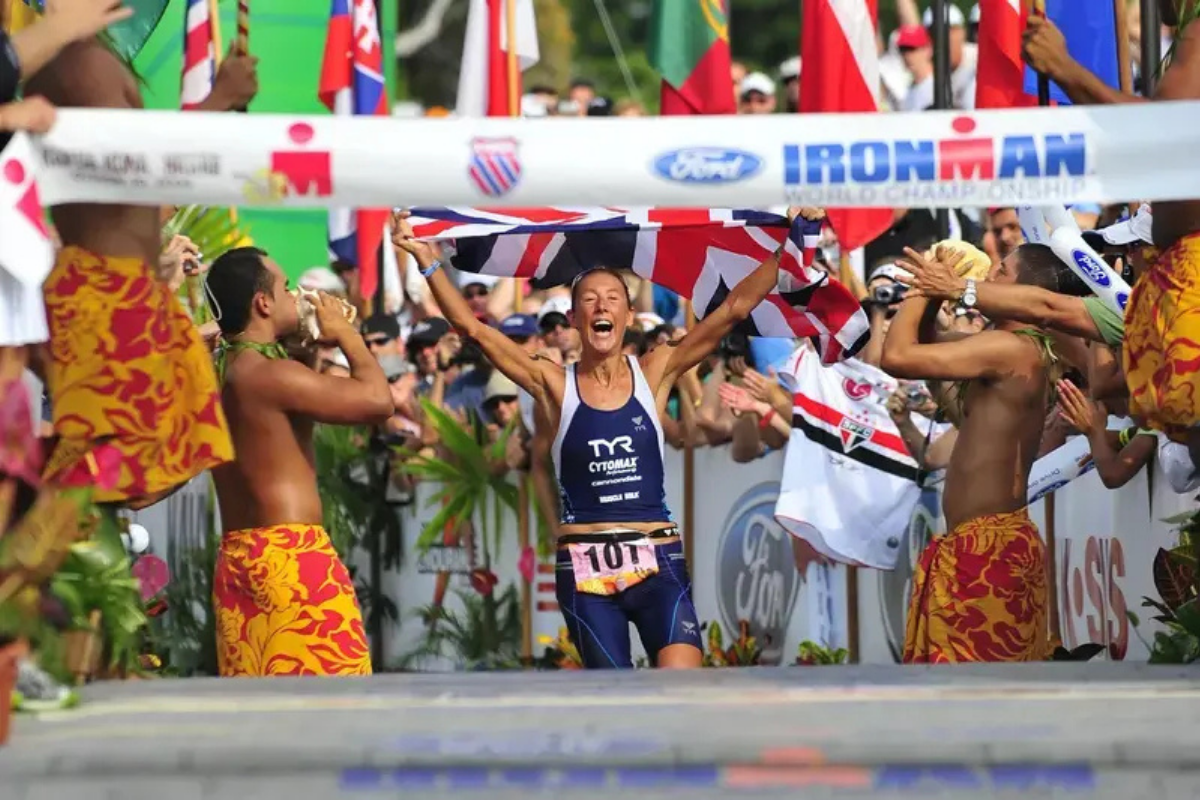
Fueling Smarter: From Kona Legends to the Next Generation
Not long ago, the idea of consuming 90–120 grams of carbohydrates per hour sounded extreme. But as performance science has evolved, so has the way world-class athletes fuel their biggest races.
From Chrissie Wellington’s Kona victories in the late 2000s to Danielle Lewis’ modern-day breakthroughs, the journey of endurance fueling is a masterclass in learning, testing, and adapting.
At Endurance Kollective, we see it every season — athletes discovering that the key to going faster isn’t just in the training plan, but in the fueling plan.
Chrissie Wellington: Learning Through Trial and Error
When four-time IRONMAN® World Champion Chrissie Wellington dominated the sport between 2007 and 2011, the science of endurance fueling was still developing.
Back then, Chrissie’s approach was intuitive and disciplined — porridge with honey and tahini before the race, two bottles of energy drink and a few gels on the bike, and caffeinated gels on the run.
But looking back, she admits she often under-fueled.
“If I were racing today, I’d be aiming for around 90g of carbohydrates per hour — almost 50% more than I used to take in.”
Despite her dominance, Chrissie’s experience reveals an important truth: even the best can leave performance on the table if fueling isn’t optimised.
Today, the science confirms that the body can absorb far more carbohydrates when the right glucose-to-fructose ratio is used — like the 2:1 blend found in Precision Fuel & Hydration gels and drinks.
From Racing to Research: What’s Changed Since Chrissie’s Era
Since Chrissie’s time at the top, the shift in endurance nutrition has been revolutionary:
-
Carb targets have increased from around 60g/hour to 90–120g/hour.
-
Sodium replacement is now individualised based on sweat testing.
-
Gut training has become a crucial part of race prep.
-
Caffeine is used strategically to time performance peaks.
Athletes now have access to data-driven tools like the Precision Fuel & Hydration Planner, allowing them to map out exact carbohydrate, sodium, and fluid needs for every race condition.
This evolution has completely reshaped how triathletes think about IRONMAN race nutrition, hydration strategy, and carb intake per hour during long-course events.
Danielle Lewis: Solving the Four Big Fueling Challenges
Professional triathlete Danielle Lewis has taken the next step — turning science into consistent performance.
After switching to full-distance racing, she faced the same problems most age-group athletes do: fatigue late in the bike, stomach issues, and unpredictable race-day energy.
Her solution was precision — and a partnership with Precision Fuel & Hydration.
1. Replacing high sodium losses
A sweat test revealed Danielle loses around 1,310mg sodium per litre of sweat — far higher than most athletes.
By using PH 1500, she was finally matching her sodium intake to her losses, avoiding cramps and late-race fatigue.
“Before that, my drinks weren’t even close to replacing what I was losing. Once I fixed that, I stopped falling apart on the run.”
2. Energy dips mid-race
In her early IRONMAN® races, Danielle averaged just 64g of carbs per hour — well below the 90–110g/h recommended for long-course triathletes.
After months of gut training, she now hits around 100g/h on the bike and 85–100g/h on the run, using a mix of PF 30 Gels and PF 30 Caffeine Gels.
“The difference in my energy levels late in the race is night and day.”
3. Pre-race GI issues
For many endurance athletes, gastrointestinal distress can derail a race before it starts.
Danielle simplified her carb load to low-fat, low-fibre meals like rice with honey — easy to digest and easy to tolerate.
4. Using caffeine with intent
Caffeine takes about 45 minutes to peak in the bloodstream. In 2022, Danielle took it reactively — whenever she “felt she needed it.”
Now, she plans caffeine strategically, starting with a PF 30 Caffeine Gel pre-race and topping up at set intervals to sustain focus and alertness throughout.
Why This Matters for You
You don’t need to be a professional to apply these lessons.
If you’re training for a triathlon, marathon, or gran fondo, your nutrition can make or break your performance just as much as your pacing.
Start with these takeaways:
-
Aim for 90–120g carbs per hour during long races.
-
Match your sodium losses — start with PH 1500 if you’re a heavy sweater.
-
Train your gut to handle higher carb loads before race day.
-
Plan your caffeine strategy instead of relying on guesswork.
The difference between hitting the wall and finishing strong is rarely about fitness — it’s about fueling.
Fuel Like a Pro
From Chrissie Wellington’s era-defining wins to Danielle Lewis’ data-driven precision, the message is clear: fueling is the fourth discipline of triathlon.
Whether you’re chasing a Kona slot or finishing your first long-course event, Precision Fuel & Hydration provides the exact carbohydrate and electrolyte solutions to help you perform at your best.
Shop the full range here:
👉 Precision Fuel & Hydration Collection
Recommended Products
PF 30 Gel
Delivers 30g of carbohydrates from a 2:1 maltodextrin-to-fructose blend for rapid energy absorption. Ideal for maintaining steady energy during bike and run legs.
PF 30 Caffeine Gel
Combines 30g of carbs with 75mg of caffeine for an extra mental and physical boost in the late stages of racing.
PH 1500 Hydration Drink Mix
High-strength electrolyte drink delivering 1,500mg sodium per litre — designed to match heavy sweat losses and support optimal hydration.
Explore the full range at:
https://endurancekollective.co/collections/precision-fuel-and-hydration
